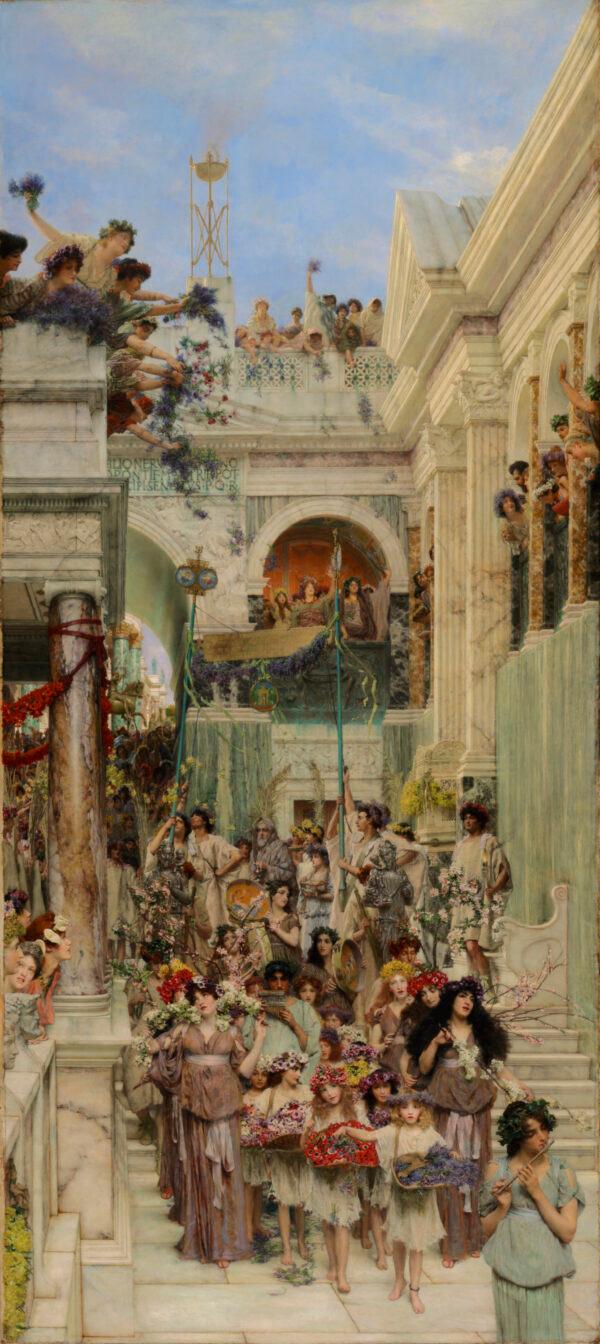Capturing the festive May Day ritual, 19th-century painter Lawrence Alma-Tadema’s “Spring” depicts a procession of beautiful girls and women carrying colorful flowers and wearing floral wreaths, descending the stairs of a classical marble structure. The classical-subject painter re-envisioned the Victorian custom of children gathering flowers from the countryside on the morning of May 1 and placed the opulent scene in ancient Rome. In this way, he suggests the festival’s great antiquity, through architectural details, dress, sculpture, and even the musical instruments based on Roman originals.

“Spring,” 1894, by Lawrence Alma-Tadema. Oil on canvas; 70 1/4 inches by 31 5/8 inches. The J. Paul Getty Museum, Los Angeles. Public Domain





